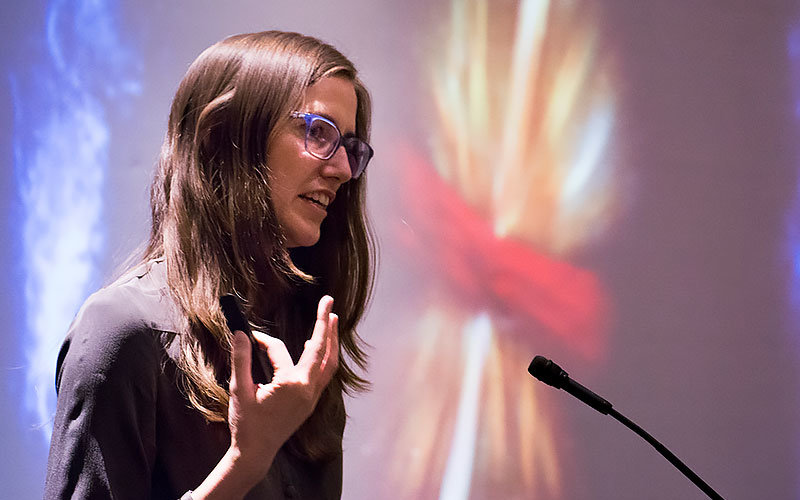
For Cal State Fullerton astrophysicist Jocelyn Read, the unprecedented discovery of gravitational waves produced from the collision of two neutron stars has forever changed the world of physics and astronomy.
“There is a gold mine of science to come,” Read told audience members at a campus public lecture Oct. 16, the same day CSUF and other scientists across the globe made the groundbreaking announcement of the spectacular cosmic event.
Read, assistant professor of physics, and Joshua Smith, associate professor of physics and Dan Black Director of Gravitational-Wave Physics and Astronomy, whose research efforts contributed to the detection, discussed the latest scientific finding in gravitational-wave astronomy. The pair gave a glimpse into the science behind the first-ever detection and how the two identical LIGO detectors in the U.S., and a third detector in Italy, made the history-making observation of the binary neutron star merger.
Some of the nuggets of the discovery, which Read and other scientists are calling “The Golden Binary,” include:
- Neutron star collisions likely are the source of heavy elements, such as precious metals like gold, platinum and lead, which are subsequently distributed throughout the universe.
- The first joint gravitational wave and light-wave observation — when the stars collided, a flash of light in the form of gamma rays was emitted and seen on Earth. Scientists also were able to “see” the precise location of the galaxy where it happened, known as NGC 4993, and 130 million light years away.
- Light and gravity travel at the same speed, confirming Albert Einstein’s 1915 general theory of relativity.
- Confirmed that neutron star mergers produce short gamma-ray bursts — a powerful explosion of energy.
- The observation gives scientists a new way to measure how fast the universe is expanding.